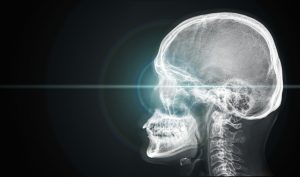The Hidden Effects of Head Injuries
The Hidden Effects of Head Injuries
The issues surrounding head injuries, including concussions, have never been a part of mainstream conversation more than they are right now. The effects of head injuries are numerous and affect many people, particularly athletes. The reports of thousands of ex-NFL players suing their former league regarding their mental health have shaken the sport. The impact of those reports has trickled down to its youngest players. Recently, pee-wee football organizations have released new rules limiting contact during practices.
Parents Know
Every athlete and parent knows football isn’t the only sport that is raising concerns about head injuries. Cycling has the highest number of people who sustain head traumas reporting to the emergency room each year. Almost double the amount of the next highest, football. Hockey, soccer, wrestling, field hockey, baseball, softball, basketball, in fact all sports, reported an increase in head injuries from 2008 to 2009. Our kids are becoming faster, stronger, and start sports earlier. Therefore, their chances of sustaining chronic head injuries, and long-term brain injury, is dramatically rising. There is also a growing concern in the military regarding combat training procedures.
The brain injury component of these injuries is vital to address. The leading edge field of Chiropractic Functional Neurology has brought exciting new hope, healing, and possibilities to the victims of head trauma.
Hidden Tragedy
Just as concerning is the hidden tragedy that every head injury can damage the neck. Since the primary focus at the time of a head injury is the head, the neck is very often overlooked. There are distinct signs of neck injuries, vertebral subluxations as an example, that can be found during an examination at the time of injury, as well as days, weeks, months and even years later. Due to the focus and pressure rising on concussions, the rapid forward-backward motion commonly known as whiplash has been swept under the rug. It is downplayed and often ignored. And yet, the vast majority of head injuries also have the mechanism to cause whiplash injuries as well.
A report on ESPN told the story of a teenage football player. He made a tackle where he led with his head and broke his neck. In this case, his head wasn’t even injured. However, his neck was injured severely and this unfortunate young man is paralyzed as a result.
Long-Term Effects
Most neck injuries that occur in conjunction with head trauma are not severe enough to cause paralysis, but can cause pressure on nerves that affect the health of the victim on many levels. Whiplash and concussion have serious long-term effects, including depression, memory loss, fatigue, mood swings, headaches and chronic instability. Head and neck injuries also damage sensitive nerves in these regions as they exit the spine. Damage to ligaments can mean continual nerve irritation and interference if proper care is not given. The effects from these injuries can last decades after the pain goes away.
The potential for long-term effects has caused many to run away from activities they love and use to remain physically active. Rather than leave athletics, the Lifestyle Care Continuum of The 100 Year Lifestyle can help you correct and protect spine and nervous system subluxations that can affect the health of muscles, ligaments and vital organs.
Care
Crisis Care provides relief and stability to injured areas of the spine. It is essential that these injuries are given appropriate time to stabilize, as head and neck injuries have a high rate of lingering symptoms. The Critical Transition phase of care is essential to help minimize the long-term effects of these injuries. Major research centers still only recommend care for several weeks following an injury. This recommendation is one of the probable causes for continued nerve damage. For people who have sustained previous injuries and those looking to avoid them the spine and nerve protection afforded by Chiropractic Lifestyle Care contributes to optimum function and support, which can minimize the risk of future injuries.
This issue will be part of our society for years to come. If you or a loved one has ever sustained even a mild head or neck injury, consider your long-term health. Get you spine and nervous system checked. The damage done by the injury may not surface for years to come, but your ability to protect your long-term health and well-being begins now.
- SHARE THIS POST



